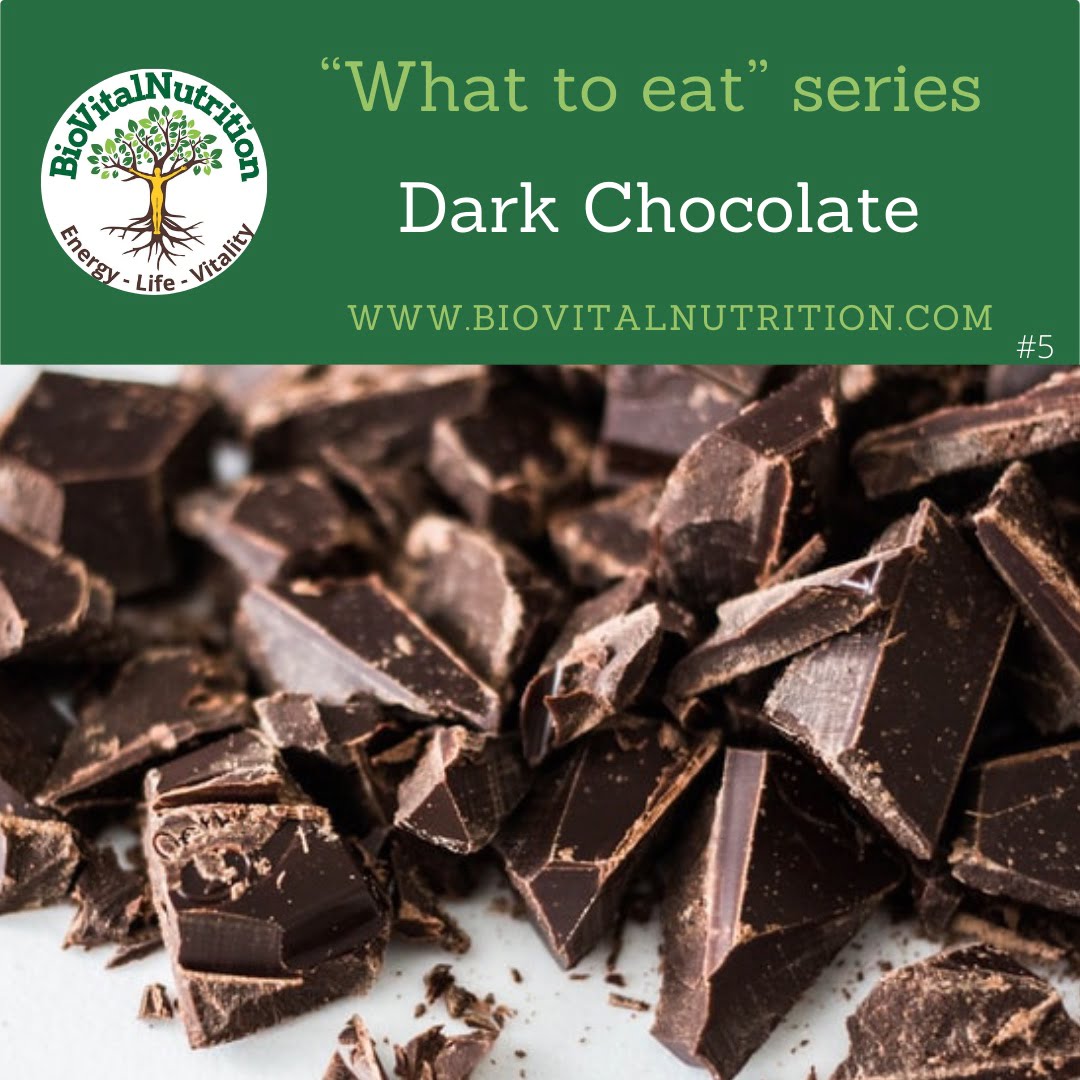
Chocolate is made from cocoa beans. As an excellent source of antioxidants (flavonoids), dark chocolate with a high cocoa solids content (also called cocoa mass or cocoa butter) of 70%+ is a very nutritious ingredient and is beneficial to health. Antioxidants prevent inflammation and oxidative stress: as such, they slow down the ageing process and assist in reducing the incidence of many diseases (heart, skin, neurodegenerative, cancer…). It contains fibre, healthy fats (mostly oleic acid – also found in olive oil – and know to be good for the heart) and is packed with lots of important minerals (iron, magnesium, zinc, selenium…).
Dark chocolate has been found to reduce levels of LDL (bad) cholesterol, as well as blood pressure and insulin resistance which are all risk factors for heart disease and diabetes.
The antioxidants in dark chocolate may also protect our skin from sun damage by improving blood flow and hydration to the skin.
By improving blood flow, dark chocolate also improves blood flow to the brain and has therefore been found to improve brain function. It also has prebiotic properties: by improving the diversity and abundance of gut bacteria, it impacts the gut-brain axis and can lead to improved mood. And it contains natural compounds such as theobromine, tryptophan and phenethylamine that are known to elevate mood.
However, it also contains some sugar, unhealthy saturated fats and caffeine so needs to be consumed moderately: maybe a square or two, or a hot cocoa on its own. I like to add a few shavings of it on top of my homemade breakfast muesli or over yogurt (or kefir) with fresh berries and grated apples: yummy! Lastly, make sure you choose a quality dark chocolate with at least 70% or higher cocoa solids content – all chocolate contains sugar or it would taste too bitter but the higher the amount of cocoa solids, the less sugar (and vice versa) so check the sugar content as this can vary between manufacturers. For example, a 70% chocolate bar will contain 30% sugar; a 80% bar will contain 20% sugar, etc. So opt for a high percentage to restrict the levels of sugar and avoid white or milk chocolates which contain over 50% sugar!
Choosing higher cocoa solids content chocolate is also a greener choice as the vegetable fat found in milk chocolate is likely coming from countries where rainforests have been cut down to allow for palm oil production.
I am passionate about food and I hope you find this information interesting. If you want to find out more, feel free to contact me on 07788 444 199 or info@biovitalnutrition.com